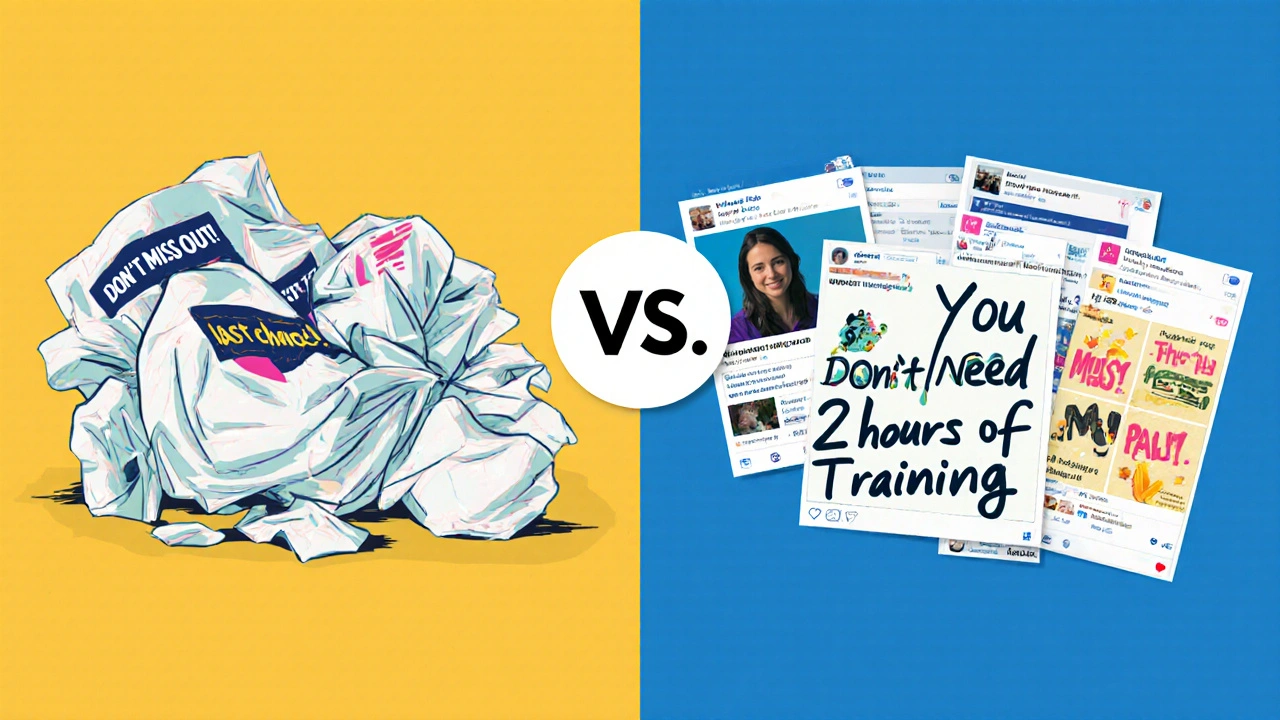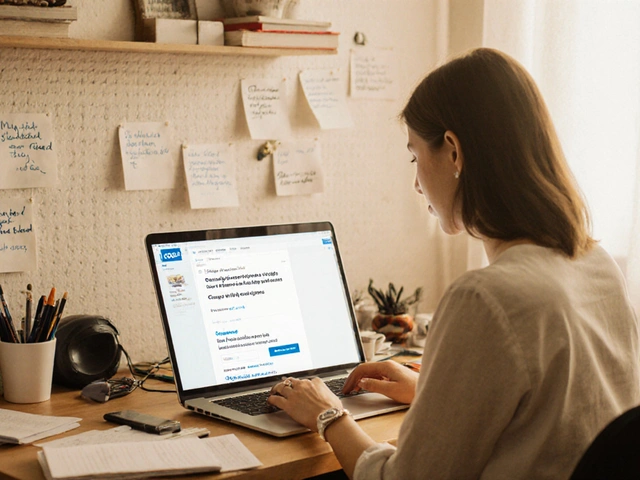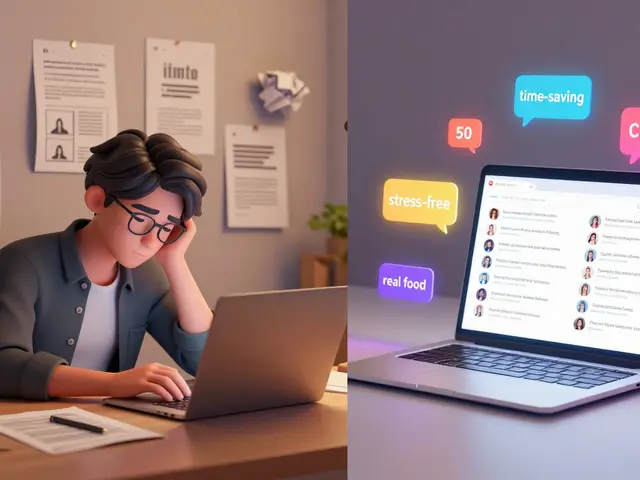Most online marketers are drowning in content demands. Blog posts, social captions, email sequences, ad copy - it never stops. And if you’re doing it all yourself, you’re either burning out or cutting corners. The good news? You don’t need to hire a team of writers. You just need to learn how to use ChatGPT the right way.
Stop Generating, Start Strategizing
A lot of people think using ChatGPT for marketing means typing ‘write me a Facebook post’ and hitting enter. That’s not strategy. That’s automation. And automation without direction is just noise. Real value comes from using ChatGPT as a thinking partner. Think of it like a junior copywriter who never sleeps, never gets tired, and can draft 50 versions of a headline in 30 seconds. But you’re still the boss. You decide what to keep, what to tweak, and what to scrap. Start by defining your goals: Are you trying to get more clicks? Increase email sign-ups? Reduce cart abandonment? ChatGPT works best when it’s solving a specific problem, not just filling a content calendar.Turn Customer Pain Points Into Content Gold
Your customers are already telling you what they need. They’re asking questions in comments, leaving reviews, and sending DMs. But most marketers ignore this goldmine. Here’s how to use ChatGPT to turn customer feedback into content:- Collect 10-15 real customer questions from your emails, reviews, or social media comments.
- Paste them into ChatGPT: ‘Here are 15 questions my customers keep asking. Turn each into a short blog post idea with a headline and one-sentence hook.’
- Review the output. Pick the top 5 that match your product’s strongest benefits.
- Write the posts yourself - but now you’ve got a clear roadmap.
Write Emails That Actually Get Opened
Email open rates are dropping. Why? Because most subject lines sound like every other brand. ‘Don’t Miss Out!’ ‘Last Chance!’ ‘Sale Ends Tonight!’ ChatGPT can help you break the pattern. Try this prompt: > ‘I sell eco-friendly laundry detergent. My audience is busy moms aged 30-45 who care about health and sustainability. Write 10 subject lines that feel personal, not salesy. Use real language moms use when talking to each other.’ The output might include lines like:- ‘I found a detergent that actually gets my toddler’s juice stains out (and it’s plant-based)’
- ‘My kid’s rash cleared up after we switched - here’s why’
- ‘You’re not crazy. Your laundry detergent really is making you itchy.’

Build a Social Media Engine That Doesn’t Feel Robotic
Posting daily on Instagram, TikTok, and LinkedIn is exhausting. But you don’t need to post every day - you just need to post the right things. Use ChatGPT to reverse-engineer what’s working in your niche:- Find 5 top-performing posts from competitors in your industry (10K+ likes or shares).
- Copy the text (not the images) and paste it into ChatGPT: ‘Analyze these 5 viral posts. What emotional trigger, format, or structure do they all share?’
- Ask: ‘Based on this pattern, write 10 post ideas for [your industry] that follow the same structure but feel original.’
Automate Ad Copy Without Losing Your Voice
Google and Meta ads live or die by their copy. But writing dozens of variations for every campaign? Exhausting. Here’s a smarter way: > ‘I sell handmade candles. My main audience is women aged 28-45 who buy self-care gifts. Write 8 ad headlines and 8 descriptions for a Facebook ad promoting my lavender eucalyptus candle. Use conversational tone. Avoid words like ‘luxury’, ‘premium’, or ‘indulge’. Focus on mood and calm.’ ChatGPT will give you variations like:- Headline: ‘This candle makes my 10pm wind-down feel like a spa day’
- Description: ‘No loud scents. No chemicals. Just slow, quiet calm. Perfect for when the kids are finally asleep.’

Fix Your Website Copy Without Hiring a Copywriter
Your homepage, product pages, and checkout flow are probably full of vague, corporate-speak. ‘We deliver innovative solutions.’ ‘Experience the difference.’ ChatGPT can help you rewrite this into human language: > ‘Rewrite this product description to sound like I’m talking to a real person who’s tired of buying things that break. Use short sentences. Be honest. No fluff.’ Paste in your current text. Get back something like: > ‘This blender doesn’t just blend. It crushes ice, purees soup, and still works after 2 years. No weird noises. No plastic smell. Just gets the job done - even when you’re running on 3 hours of sleep.’ One SaaS founder in Melbourne used this to rewrite their pricing page. They replaced ‘enterprise-grade security’ with ‘your data stays safe even if your team forgets to log out.’ Conversion rate jumped 22%.What Not to Do
ChatGPT isn’t magic. It’s a tool. And like any tool, it can make things worse if you use it wrong.- Don’t post AI-generated content as-is. It sounds generic. Readers can tell.
- Don’t use it to write fake reviews. It’s unethical and gets flagged.
- Don’t let it replace your brand voice. If your brand is funny, make it funny. If it’s serious, keep it serious. ChatGPT doesn’t know your tone - you do.
- Don’t ignore the data. If a post flops, don’t blame the AI. Ask: ‘Was this the right message for the right person?’
Start Small. Build Momentum.
You don’t need to overhaul your entire marketing plan tomorrow. Pick one thing:- Use ChatGPT to rewrite your next email subject line.
- Turn 3 customer questions into blog ideas.
- Test 3 new ad variations.
Can ChatGPT replace my marketing team?
No. ChatGPT is a powerful assistant, but it can’t replace human intuition, emotional intelligence, or strategic thinking. It won’t understand your brand’s unique history, your customers’ unspoken needs, or the cultural context behind a campaign. Use it to handle repetitive tasks - writing drafts, brainstorming ideas, or editing copy - so your team can focus on high-level strategy, customer relationships, and creative direction.
Is using ChatGPT for marketing ethical?
Yes - if you’re transparent and responsible. It’s ethical to use AI to save time, improve clarity, or test ideas. It’s not ethical to use it to fake customer reviews, impersonate real people, or mislead audiences. Always edit AI output to reflect your brand’s voice and values. If you’re running ads, make sure they comply with platform policies. Most platforms allow AI-generated content as long as it’s not deceptive.
What’s the best prompt for generating marketing content?
The best prompts include context: audience, goal, tone, and format. Instead of ‘Write a social media post,’ try: ‘Write a 150-character Instagram caption for busy moms who hate cleaning. Our product is a quick-clean spray for kitchen counters. Use casual, empathetic language. End with a question.’ Specificity turns generic output into useful content.
How do I make ChatGPT sound more human?
Read the output out loud. If it sounds like a textbook, rewrite it. Add contractions (‘you’re’, ‘don’t’), sentence fragments, and real-life details. Mention specific frustrations, emotions, or situations your audience knows. Use slang or phrases your customers actually say. And always add your own personal touch - a story, a joke, or a memory. That’s what makes content feel real.
Can ChatGPT help with SEO?
It can help, but not directly. ChatGPT can’t rank your pages. But it can help you write content that ranks. Use it to find long-tail keywords based on customer questions, rewrite meta descriptions to be more clickable, or structure blog posts with clear headings. Just don’t stuff keywords. Focus on answering real questions clearly. Google rewards helpful content - not keyword tricks.



Write a comment